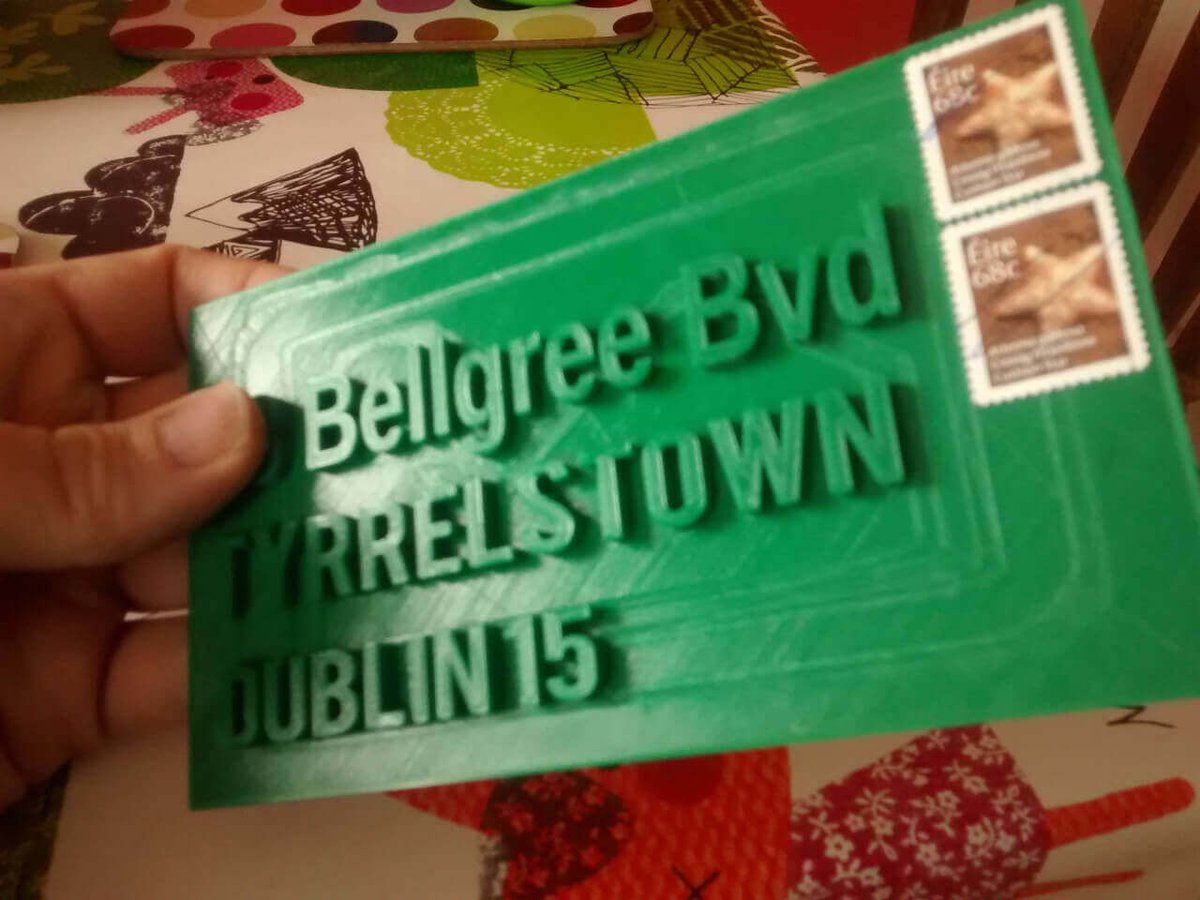The US Postal Service has released a white paper with great insights on 3D Printing and the future of manufacturing, logistics and shipping — and it’s juicy.

Neither snow, nor rain, nor heat, nor gloom of night can keep the US Postal Service from keeping up with the times.
While the digital age has drastically changed the nature of their work, the USPS is looking optimistically toward the new horizon. Rather than waiting for the next “big thing” to hit, they have been actively researching new ways to reinvigorate the oft-forgotten institution.
Last year, the USPS released a white paper on 3D printing and postal services, detailing the many ways in which 3D printing will affect the entire industry. Now, they’re back with a second paper — “An Update on 3D Printing and the Postal Service” — and it’s positively surreal.
The update gives many insights into how the USPS can play both a profitable and positive role in the future of delivery and manufacturing. There is no doubt that the postal service recognizes the power of 3D printing and the impact it will have in coming years.
However, they also had some surprising new suggestions to make. It can be boiled down to four central points:
- There is a growing need for 3D printing hubs to service individuals.
- There is an ever rising number of businesses that need access to a printers.
- People want goods fast; separating manufacturing and shipping makes this more complicated.
- 3D printing can bring production closer to consumption, and lead to a rise in local shipping.
Number four is the real crux of the discussion. As they say themselves, “last mile” delivery is a core strength of the USPS. Though they do ship packages from far and wide, the bulk of their work is in those “last,” local miles.
Furthermore, there are numerous companies that ship worldwide, yet come back, time and again, to the postal service. All studies and statistics on the impacts of 3D printing point to decreased manufacturing abroad, and far more manufacturing at the local level.
Instead of an item being assembled and shipped all over the world, it could be printed locally, bringing manufacturing jobs back to the US. According to the paper:
“3D printing could disrupt more than a third of global air cargo or ocean container shipments, as well as a quarter of the freight trucking business.”
Looking at the Postal Service Around the World
Current organizations are poorly equipped to deal with print-oriented supply chains. In reality, the current system is nowhere near prepared for such a major shift. This is why the USPS has found three major opportunities to aid in the growth of 3D printing and manufacturing.
- Establish reverse logistic services to handle the recycling and processing of 3D printed goods.
- Become the “go-to” provider by providing 3D materials and services for makers and small businesses.
- Offer 3D printing services inside post offices, possibly by partnering with an experienced external company.
These three points were deduced by studying other postal services — namely, those from France, the UK, Switzerland and Singapore — as well as companies like UPS.
Recently, UPS partnered with a company called CloudDDM to open a 3D printing mini-factory. With 100 industrial printers running 24 hours per day, they were able to produce and ship parts for corporate customers with ease.
CloudDDM also claims production costs were cut by up to 50% simply by working in one location. Furthermore, they gained a 6-hour advantage over those competitors based outside of UPS.
However, perhaps the most fun of all of these inventions comes from Amazon, who recently filed patents for a delivery truck that 3D prints goods while in transit. You can see a video of the concept below.
With these innovations, and the incredible willingness of the US Postal Service to adapt, 3D printing may mean faster shipping (especially next- and same-day services), lower costs, decreased environmental impact, and an eventual move towards reshoring manufacturing jobs.
While these seem like lofty and intangible hopes, it may just be a reality. With printing becoming more and more popular, and major retailers like Walmart, Amazon and Target taking full advantage, it seems neither snow nor rain nor traditional manufacturing can keep the future at bay for long.
Do yourself a favor and read the whole white paper for yourself here.
License: The text of "3D Printing and the Future of the Postal Service" by All3DP is licensed under a Creative Commons Attribution 4.0 International License.
